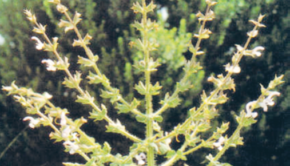What Is Organic Torah?
I often explain Organic Torah by saying its about “putting things together instead of taking them apart.” What do I mean by “putting things together?” And how does this relate to Torah?
It may be instructive to start, not with torah, but with a short excerpt from an essay by Wendell Berry, one of the leading voices in the modern agrarian movement which criticizes industrial agri-business and advocates for smaller farms and a more caring, fine tuned relationship to land and nature. This is from an essay titled “Solving for Pattern:”
Bigger tractors do not solve the problem of soil compactation any more than air conditioners solve the problem of air pollution. Nor does the large confinement-feeding operation solve the problem of food production; it is, rather, a way calculated to allow large-scale ambition and greed to profit from food production. The real problem of food production occurs within a complex, mutually influential relationship of soil, plants, animals, and people. A real solution to that problem will therefore be ecologically, agriculturally, and culturally healthful.
Perhaps it is not until health is set down as the aim that we come in sight of the third kind of solution: that which causes a ramifying series of solutions – as when meat animals are fed on the farm where the feed is raised, and where the feed is raised to be fed to the animals that are on the farm. Even so rudimentary a description implies a concern for pattern, for quality, which necessarily complicates the concern for production. The farmer has put plants and animals into a relationship of mutual dependence, and must perforce be concerned for balance or symmetry, a reciprocating connection in the pattern of the farm that is biological, not industrial, and that involves solutions to problems of fertility, soil husbandry, economics, sanitation – the whole complex of problems whose proper solutions add up to health: the health of the soil, of plants and animals, of farm and farmer, of farm family and farm community, all involved in the same interested, interlocking pattern – or pattern of patterns.
A bad solution is bad, then, because it acts destructively upon the larger patterns in which it is contained. It acts destructively upon those patterns, most likely, because it is formed in ignorance or disregard of them. A bad solution solves for a single purpose or goal, such as increased production. And it is typical of such solutions that they achieve stupendous increases in production at exorbitant biological and social costs.
— Wendell Berry, “Solving for Pattern” in The Gift of Good Land, p. 136-7
Berry powerfully contrasts the “silver bullet solution” which, as he says, “solves for a single purpose or goal,” with another way of thinking that takes into account the complex system of the whole. Berry talks about how this solving for pattern results in “health.” I’m reminded that the origin of the word health and heal is the Old English hāl which means whole. When one is whole, one has health. In other words, the whole is greater than the sum of the parts. Something emerges, almost mystically, from the proper relationships between parts that work together to create a whole. This is perhaps why we associate spirituality and beauty with the kind of natural health that Berry talks about. We intuitively find a diversified farm more beautiful and more spiritually uplifting than acres and acres of mono-cropped factory farm.
So, what does this have to do with ancient Jewish writings? I have found there as well that the “whole is greater than the sum of the parts.” When they are approached with a scalpel and taken apart, or when we insist on looking for a linear order starting from A to B to C, they don’t have a lot of life, they feel stale and don’t even seem to make much sense. But, when I look for the patterns that hold the text together, look for the symmetries and relationships, I find the texts seem to come alive. An extra dimension is added. These texts are organic.
To take a very simple example: If we look at one of the Ten Commandments “honor your mother and father” we have one important idea. It is surely important to honor one’s parents. But when we look at this commandment in the context of the pattern of the Ten Commandments as a whole we start to see more:
| 1. I am the Lord your God | 6. Do not murder |
| 2. Have no other gods | 7. Do not commit adultery |
| 3. Do not take God’s name in vain | 8. Do not steal |
| 4. Remember the Shabbat | 9. Do not bear false witness |
| 5. Honor your father and mother | 10. Do not covet what is your neighbor’s |
We might notice that the first column is all about God, except for the last one, honor your father and mother. The second column consists of rules for the just and fair running of society. Is the fifth commandment a mistake? Or perhaps it is hinting that our ideas about God may often begin with our parents. The sense of authority, of safety in the world, of feeling a part of something larger than oneself, all begin with the family unit. This, then, is a transitional commandment between the theological ones in the first column and the more social ones in the second column.
While we’re looking for patterns we might also notice that the items in the first column can be seen to form pairs with their corresponding item on the second column. We can see this most clearly in the middle pairs.
| 2. Have no other gods | 7. Do not commit adultery |
| 3. Do not take God’s name in vain | 8. Do not steal |
Worshipping other gods is likened to committing adultery. This is a theme that is found in many places in the torah and in its rabbinic commentaries. Taking God’s name in vain is in a sense stealing, using something as ours which in fact we cannot own.
How does “I am the Lord your God” relate to “Do not murder?” This “commandment” is a bit strange because it is not in the form of a commandment at all, but a statement. Perhaps it is saying “you need to know that there is an irreducible holy essence called God. Everything depends on that.” When we look at the second column we are reminded of one of the central ideas in the torah: humans are created in the image of God (Genesis 1:27). To murder a person is the ultimate expression in the social world of a denial of God.
To remember the Shabbat is to be a witness to God. Shabbat is called “ot” or sign (Exodus 31:13). Keeping Shabbat is to be a true witness of God’s reality. In contrast bearing false witness in court is a perversion of our ability to testify, to establish facts and make statements in the world.
And finally, how does honoring one’s parents relate to not coveting what belongs to one’s neighbor? Perhaps establishing the sense of one’s place in the world, of living in a unit in which I am not a god unto myself, but in which I find my place in an order or pattern is expressed in the larger world by not coveting what is not mine. When one is secure in one’s place in the world, one doesn’t need to look with jealousy at what the neighbors have.
When we only saw the one verse “honor your father and mother” it had limited depth and nuance. When we put it together with its context we start to see connections multiply. Major themes of the torah are invoked; we are reminded of connections to other parts of the torah and to the writings of the rabbis. In Wendell Berry’s language it is like a solution “which causes a ramifying series of solutions.”
We noticed that there is a beautiful symmetry between the theological and the social realms. The Ten Commandments is more than a simple list, its structure itself makes a statement: There can be no true relationship with God without expression in the social world, and the social commandments, in the biblical world view, are incomplete without the theological ones.
The process of discovering these symmetries and patterns is a creative one. It uses the artistic, metaphor making part of my brain, and it draws me into the text. I am in a creative relationship with the text and it brings a feeling of vibrancy both to the text and to me.
Bringing Wendell Berry’s essay together with my reading of the Ten Commandments is another example of a “pattern of patterns.” When we see that both a healthy farm and a biblical text are organic and come alive when we “solve for pattern” we have created a new relationship. Maybe we don’t need to take the culture out of agriculture, but the pattern way of thinking can bridge the gap between intellect and biology. Maybe, if the torah is organic, it can be a part of the solution to our fractured world. Wendell Berry says in our quotation, “A real solution . . . will therefore be ecologically, agriculturally, and culturally healthful.” Our discussion of the Ten Commandments adds the spiritual worlds, and suggested that our social and familial worlds intersect with our spiritual worlds in complex ways. I don’t think Wendell Berry would disagree. In fact, here is a quote from another essay by Berry in which he continues and expands his discussion of health and wholeness.
Blake said that “Man has no Body distinct from the Soul . . .” and thus acknowledged the convergence of health and holiness. In that, all the convergences and dependences of Creation are surely implied. Our bodies are also not distinct from the bodies of other people, on which they depend in a complexity of ways from biological to spiritual. They are not distinct from the bodies of plants and animals, with which we are involved in the cycles of feeding and in the intricate companionships of ecological systems and of the spirit. They are not distinct from the earth, the sun and moon, and the other heavenly bodies. (“The Body and the Earth”p.103 in The Unsettling of America)
The organic torah for today will acknowledge the deep connections of body, soul, society, economy and earth. Because the torah and rabbinic writings are organic in structure, the more we pay attention to their patterns the more we can connect our spiritual inheritance with the agricultural, ecological, social and economic issues of our times, adding a new dimension to the pattern of patterns, bringing more health.




